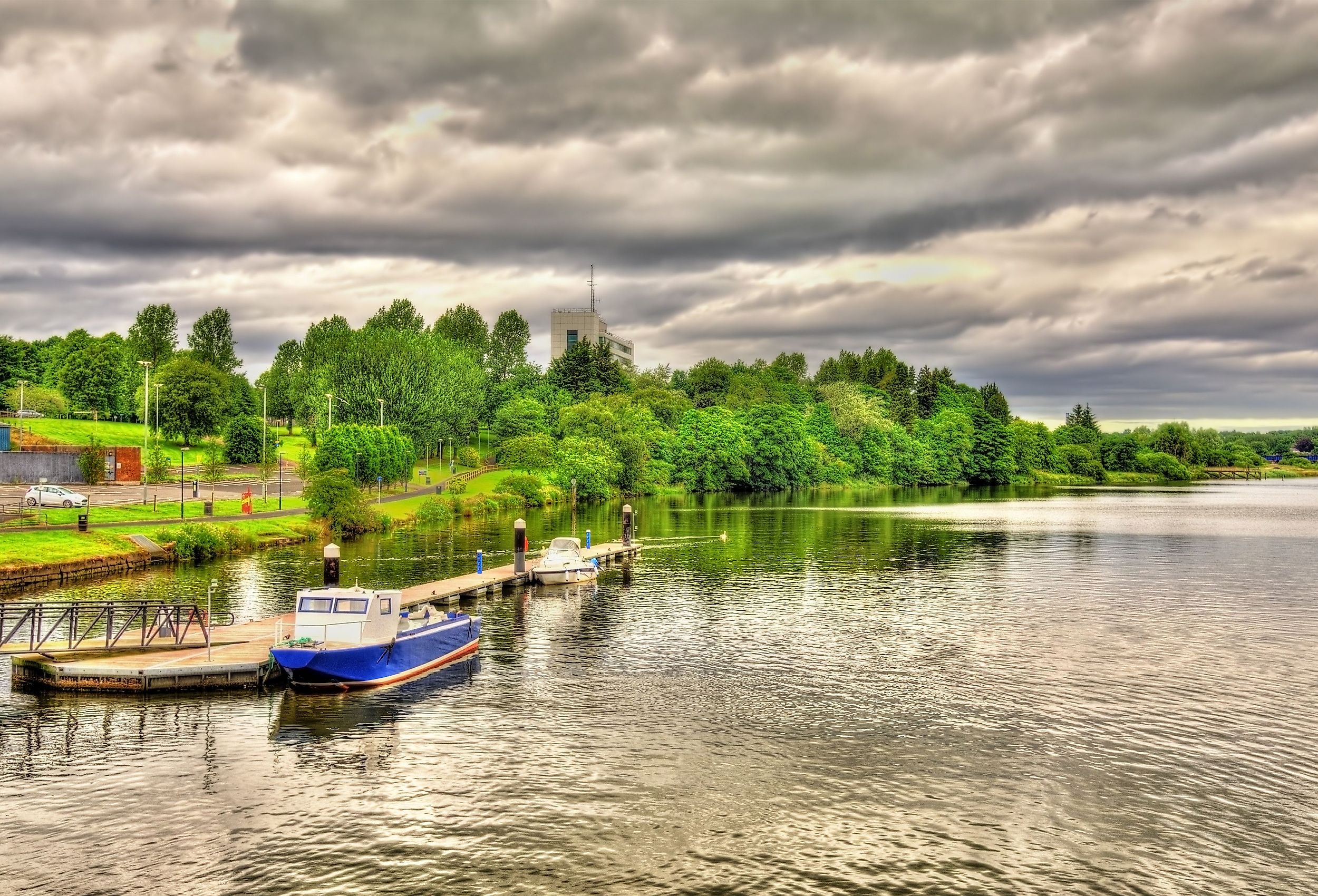
River Bann
Situated in Northern Ireland, River Bann is a beautiful body of water and one of the country’s largest rivers. It flows from the southeast to the northwest and is pivotal for the region’s marine life, recreational activities, and some commercial ports. Testament to this, the River Bann has a rich history involving fisheries, industries, religious groups, and even the first settlers in the country of Ireland. As of today, this river is best known for its size and length, due to which it has been divided into two parts: Upper Bann and Lower Bann. Both of these sections combined have a total length of nearly 100 miles, and include tributaries on both sides.
Source Of The Bann River
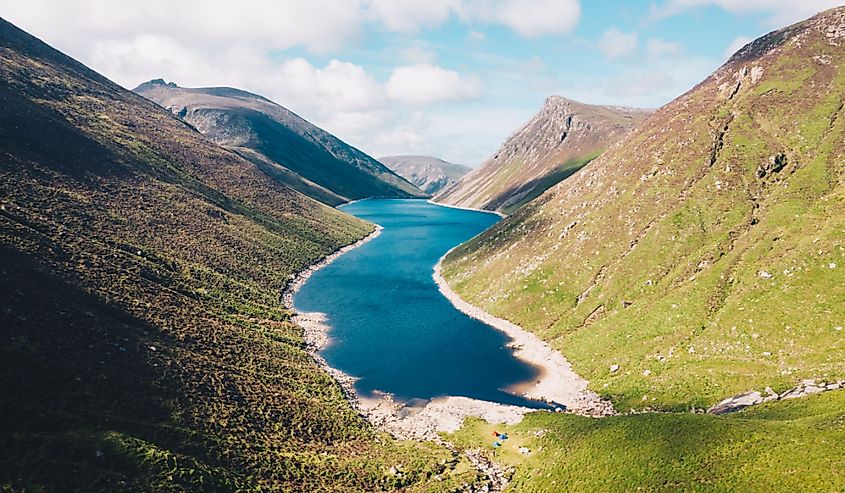
The Bann River begins in southeastern Northern Ireland, a few miles from the coast. Here, in County Down, you can find Slieve Muck, a mountain in the Mourne Mountains. At a height of 2,199 feet (670 m), this mountain has multiple summits which form an escarpment and produce the Bann River. Created from the confluence of multiple small streams flowing down from Slieve Muck, the river gradually begins to form into a larger stream toward the mountain’s base. Following this, the river begins to flow to the northwest towards the city of Hilltown, until it reaches the Spelga Reservoir. At this juncture, the Bann River is much smaller and has minimal water flow until it joins further tributaries and begins moving north from Hilltown.
Course and Flow Of The Bann River
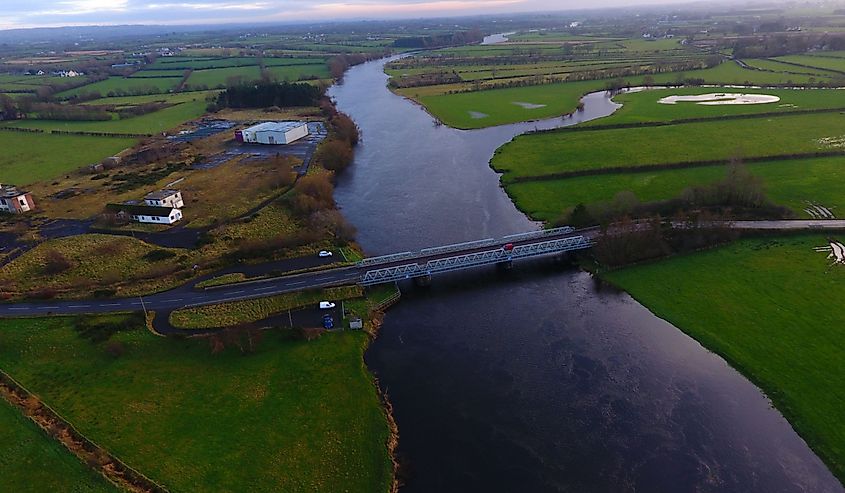
From its onset in the Mourne Mountains, the Bann River covers a total distance of 80 miles (129 km) throughout Northern Ireland. The river primarily moves northwest from its source and is divided into two parts, the Upper Bann and Lower Bann. The Upper Bann flows from the Spelga Reservoir, crossing through a number of towns such as Hilltown, Banbridge, and Gilford. Throughout this section, the river is quite narrow but is met with multiple tributaries such as the Agivey River, Aghadowey River, and the Articlave River. After a total distance of 40 miles (64 km), the river joins Lough Neagh, a large freshwater lake in central Northern Ireland, at which point the Upper Bann ends. Beginning from the northwest of Lough Neagh, the Lower Bann begins, which is a larger and faster-flowing section of the Bann River. The river continues a route to the northeast for approximately 40 miles (64 km) during which it meets the Ulster Blackwater, another major tributary. Finally, the Bann River reaches its mouth at the Atlantic Ocean, a few miles from the city of Coleraine.
Covering the majority of Northern Ireland, the Bann River is the country’s largest river and thus, has a large flow and impact on surrounding areas. To this end, the river has a basin size of 2,230 square miles (5,775 sq. km.), which is 40% of Northern Ireland’s total area. In terms of width, the river has an average width of approximately 200 feet (60 m). Although this is a rough estimate as it varies, especially when taking into consideration the massive Lough Beg Lake, located in the Lower Bann.
History Of The Bann River
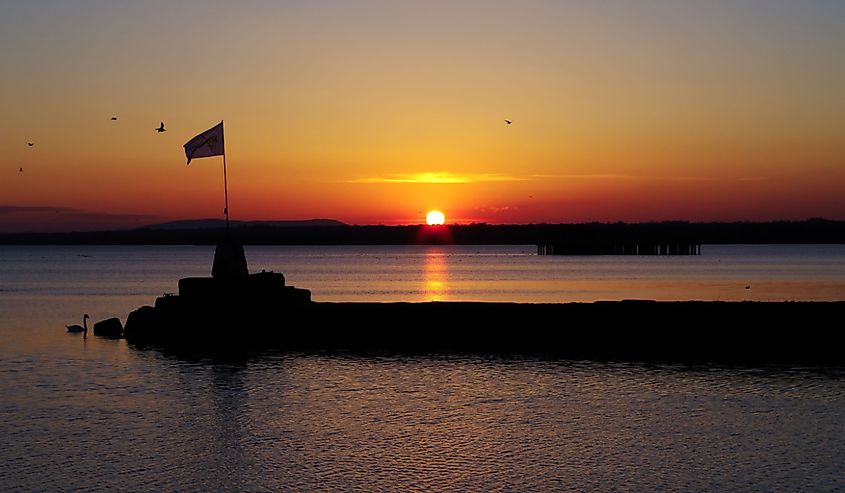
The Bann River was discovered more than 1500 years ago with the earliest references to the river being in Roman astrologer/geographer’s atlas, Geography. In this text, the river’s mouth is named Argita, or “shining” in English. Following its discovery, the river has been integrated into local history and politics, with an especially important role in the past few centuries. Most prominently, it has been an important route through the country for the transport of linen, whiskey, and coal. However, one of the most important conversations regarding the Bann River in recent years has been its position as the only outlet for the large freshwater lake, Lough Neagh. As the lake is fed by six major rivers and has only one outlet, issues such as flooding came to notice in 1738 when it was petitioned in the Irish parliament. However, no true action was taken on the topic until nearly a century later, when the Scottish engineer, Alexander Nimmo came up with an idea. According to Nimmo, lowering the summit level of the lake would allow a second outlet to form, and simultaneously create an opportunity for energy generation. The plan failed to win support and it was scrapped. In the coming years, many other ideas came up with the work of parliament, engineers, and other stakeholders.
One such idea, executed in 1847 was to remove the Portna shoal and create locks that would lower the water level, while also creating water power opportunities in the Lower Bann. While this idea did succeed and was implemented in an 11-year construction time, the revenue generated from the Lower Bann was below estimated which led to further proposals in the past century. Thankfully, multiple trusts were created for the Upper Bann, Lough Neagh, and Lower Bann respectively to ensure their continued operation and positive growth. However, these trusts were also disbanded on the appeal of contributing parties. All in all, both the Upper Bann and Lower Bann have been met with a wide array of ideas and proposals, albeit many have been unable to come to fruition.
Wildlife In The Bann River
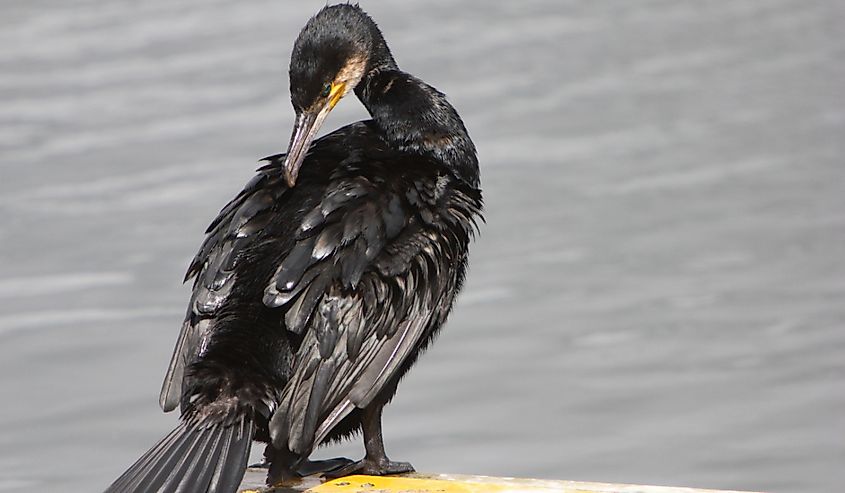
With its large size and immense basin, the Bann River is also a major habitat for many animal and plant species in Northern Ireland. Having protected areas from erosion, this river provides a habitat for many marine species and has become a treasure trove for wildlife. Within the river itself, you can find a plethora of animals such as the Atlantic salmon, brown trout, and some species of eel. Additionally, there are unique and endangered eel-like sea lamprey in some parts of the Lower Bann, which is one of the few places you can find them globally. Moving out to the banks of the river, animals such as otters, shellfish, bats, and myriad birds are able to make habitats and find food. Thanks to this, the entirety of the Bann River provides an ideal habitat for a vast animal population.
Tourism and Economic Activities in the Bann River
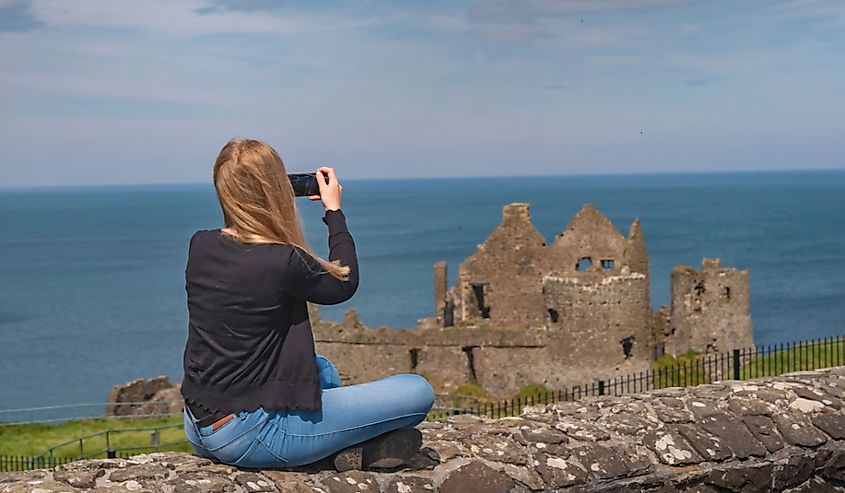
Testament to the initial ideas to produce hydroelectricity from the Lower Bann in 1847, the river has gradually been utilized to generate electricity. The 1847 project itself was designed to create revenue from tolls and water power, although it was not able to meet estimates. Moreover, as the project went over budget by 50,000 British pounds, it was deemed a loss and poorly received by the public. Apart from this, another proposal was made in 1925 for a hydroelectric plant in the Lower Bann, although similar to others, this plan was once again abandoned. Despite this, however, plans in the Upper Bann have been increasingly positive and waterpower from the area has been crucial in developing the local linen industry. Apart from its use for electricity, the Bann River is prominent for trade in the country. This has been true for hundreds of years and while it may not be as busy today, the river still has a commercial port in Coleraine, used for metal and coal transfer. The local wildlife supports many eel and salmon fisheries, which are famous in Northern Ireland.
In terms of tourism activities, the Bann River is rich with sights to see and things to do. Offering amazing opportunities for pleasure boating, with many organized tours. One tour available is from Newferry to the Church Island of Portglenone Marina! In addition to boating, the river is also famous for its fishing and water sports. Specifically, the Upper Bann is known for coarse fishing, while the Lower Bann is famous for its water sports opportunities and clear waters.
Combining its breathtaking beauty, unique route, and economic importance over the years, the Bann River is an incredible body of water in Northern Ireland. It is the country’s largest river and provides opportunities for both locals and tourists alike. Moreover, the river supports an impressive ecosystem, from Atlantic salmon all the way to the elusive sea lamprey. Thus, working to preserve and promote this river is an important task that everyone should be a part of!










